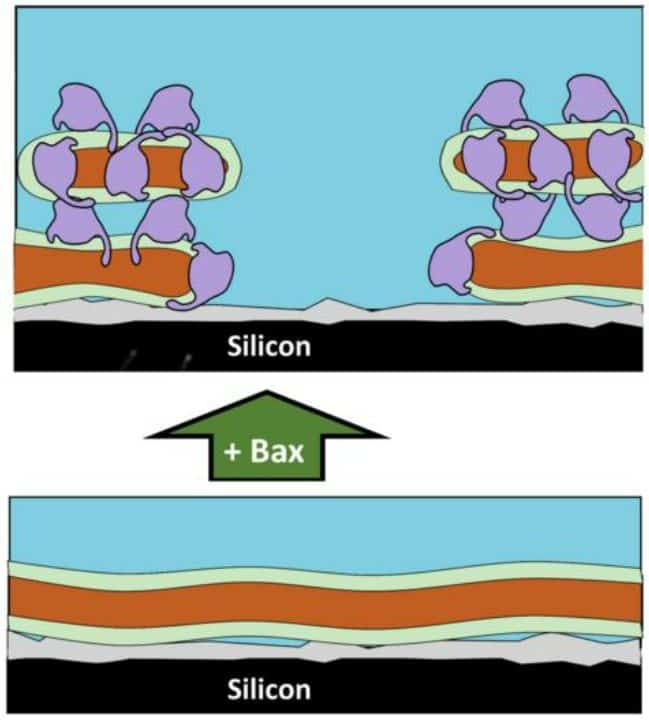The New Frontier in the Fight Against Cancer: Scientists Decipher Complex Interplay of Proteins in Cancer Prevention
For the first time, scientists have identified and detailed a unique molecular mechanism integral to the initial phases of apoptosis, also known as programmed cell death. This process is critically important in the prevention of cancer.
The findings, published today (2nd June 2023) in Science Advances, come from the collaborative efforts of a research team led by Dr Luke Clifton from the STFC ISIS Neutron and Muon Source in Oxfordshire, and Professor Gerhard Gröbner from the University of Umeå. Their collaboration also included partners from the European Spallation Source in Sweden. This new development is the latest in a series of joint research projects, each focusing on the specific cellular proteins that facilitate apoptosis.
Apoptosis is a vital biological process that, when disrupted, can enable cancer cells to multiply uncontrollably and render them resistant to treatment. The balance of this process in healthy cells is delicately maintained by two proteins with opposing functions: Bax and Bcl-2.
Acting as the cellular custodian, the soluble Bax protein eliminates aged or damaged cells. When stimulated, it pierces the mitochondrial membrane, creating pores that activate the sequence of programmed cell death. On the other hand, Bcl-2 is a survival protein embedded within the same membrane, functioning to prevent premature cell death by ensnaring and sequestering the Bax proteins.
In cancer cells, the production of Bcl-2 is ramped up, causing uncontrolled cell multiplication. Though the importance of this dynamic in cancer progression has long been recognized, the exact roles of Bax and the mitochondrial membrane in apoptosis remained ambiguous until this recent discovery.
“This work has both advanced our knowledge of fundamental mammalian cell processes and opened exciting possibilities for future research,” remarks co-lead author Dr. Luke Clifton.
“Understanding what things look like when cells work properly is an important step to understanding what goes wrong in cancerous cells and so this could open doors to possible treatments.”

Harnessing the power of neutron reflectometry, the research team employed the advanced capabilities of the ISIS Surf and Offspec instruments. This strategy allowed them to delve deep into the interactions between the Bax protein and lipids in the mitochondrial membrane, thereby building on their prior work concerning membrane-bound Bcl‑2.
The use of SURF and OFFSPEC for neutron reflectometry provided the team with a real-time observation of how this protein communicates with the mitochondrial membrane’s lipids during the onset of apoptosis. Through the use of deuterium-isotope labeling, they were able to discern an unprecedented phenomenon: when Bax instigates pore formation, it co-opts lipids from the mitochondrial membrane, thereby creating lipid-Bax clusters on the mitochondrial surface.
Additionally, they employed time-resolved neutron reflectometry coupled with surface infrared spectroscopy in the ISIS biolab. This allowed them to witness the process of pore formation unfolding in two distinct stages. Firstly, Bax quickly attaches to the mitochondrial membrane surface. This is followed by a more gradual formation of membrane-destroying pores and Bax-lipid clusters, happening simultaneously. Remarkably, this slower perforation process is executed on a timescale of several hours, which aligns with the natural timing of cell death in vivo.
This study marks the first time that scientists have uncovered direct evidence of mitochondrial lipids’ role during the membrane disruption process during cell death triggered by Bax proteins.
“As far as we can tell,” as explained by the author, “this mechanism by which Bax initiates cell death is previously unseen. Once we know more about the interplay between Bax and Bcl-2 and how it relates to this mechanism, we’ll have a more complete picture of a process that is fundamental to human life. This work really shows the capabilities of neutron reflectometry in structural studies on membrane biochemistry.”
This discovery expands upon earlier research conducted by the group, exploring the molecular interplay of Bcl-2 within the cell membrane. This contributes towards a more comprehensive grasp of apoptosis in its initial phases.
“The unique findings here will not only have a significant impact in the field of apoptosis research but will also open gateways for exploring Bax and its relatives as interesting targets in cancer therapy such as by tuning up their cell-killing potential,” adds co-lead author Prof. Gerhard Gröbner.
Plans are in place for subsequent investigations at ISIS, aiming to enhance our comprehension of the intricate processes of apoptosis, with an emphasis on understanding the interaction between Bax and Bcl-2. The objective is to generate enlightening findings, paving the way for fresh trajectories in research, thereby progressively deepening our grasp of cellular operations vital for human existence.
Source: 10.1126/sciadv.adg7940
Image Credit: Getty